http://hyperallergic.com/315836/a-new-film-and-book-seek-the-true-hieronymus-bosch/?utm_medium=email&utm_campaign=A%20New%20Film%20and%20Book%20Seek%20the%20True%20Hieronymus%20Bosch&utm_content=A%20New%20Film%20and%20Book%20Seek%20the%20True%20Hieronymus%20Bosch+CID_a9fa610810b358ee1cdff1f313cc888a&utm_source=HyperallergicNewsletter&utm_term=A%20New%20Film%20and%20Book%20Seek%20the%20True%20Hieronymus%20Bosch
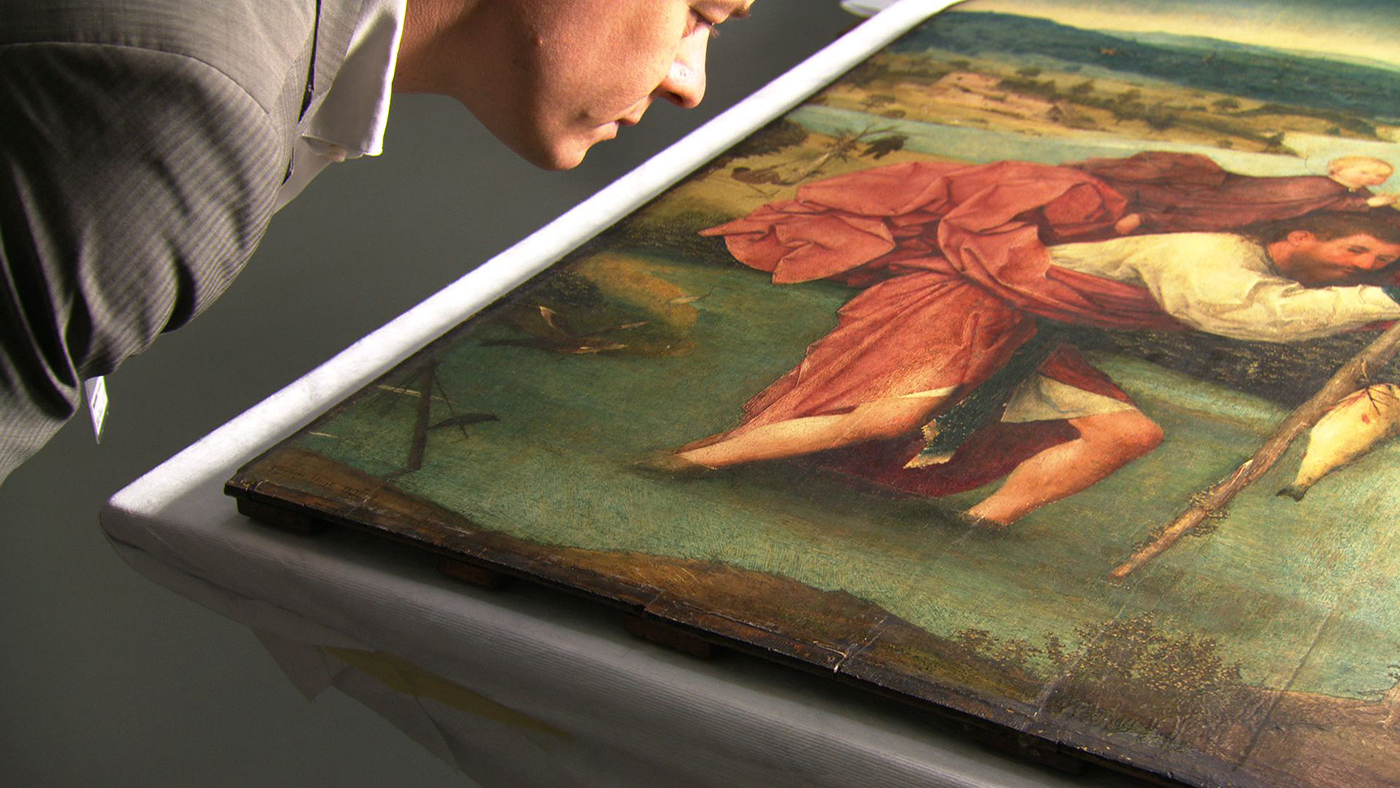

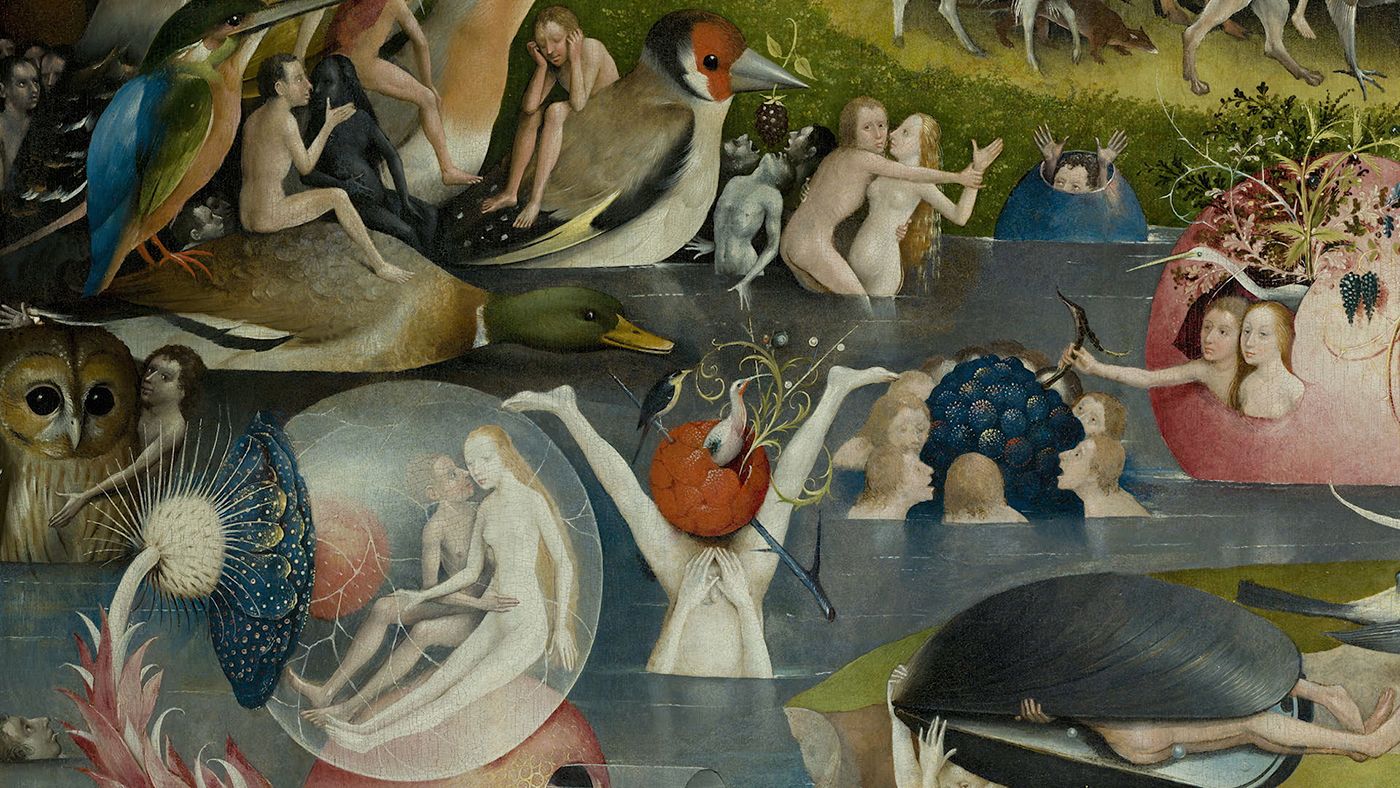
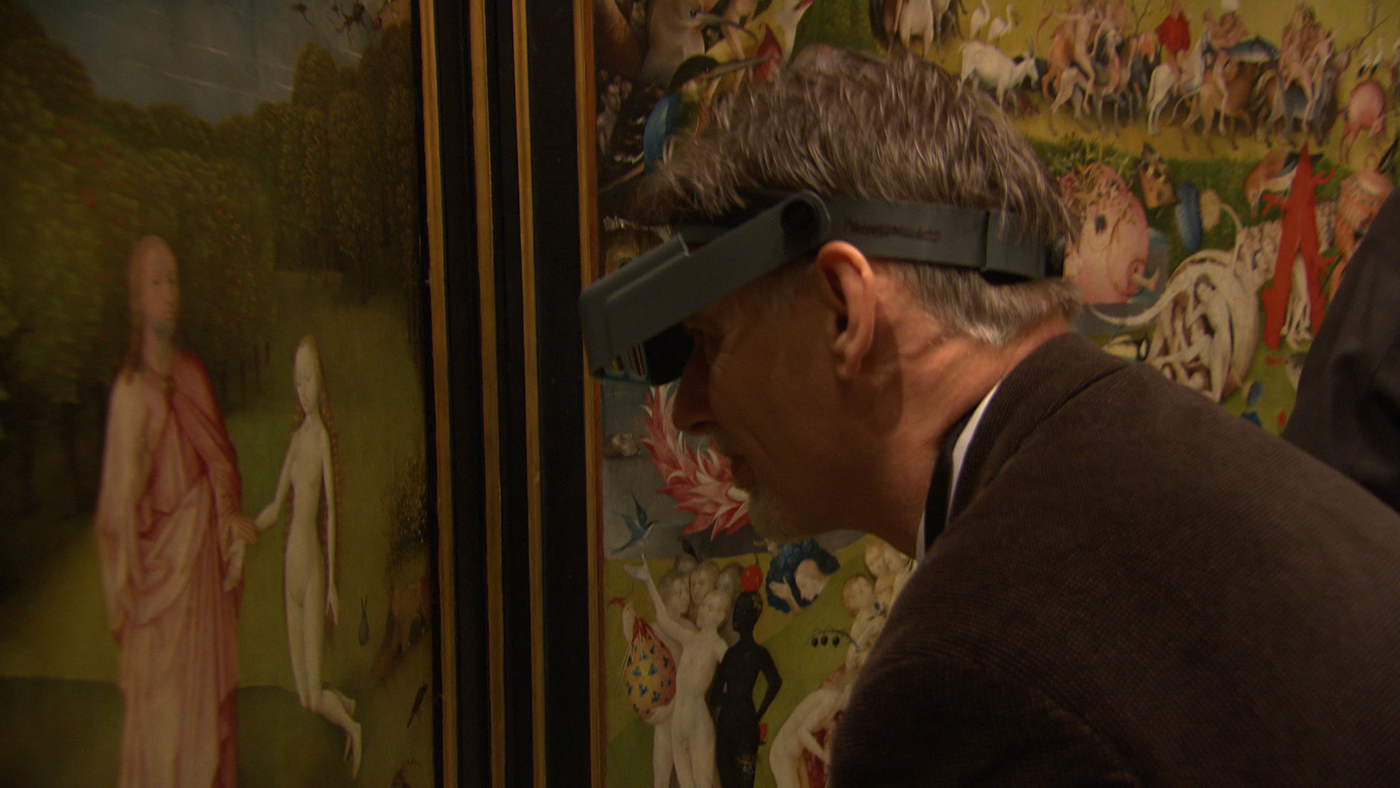
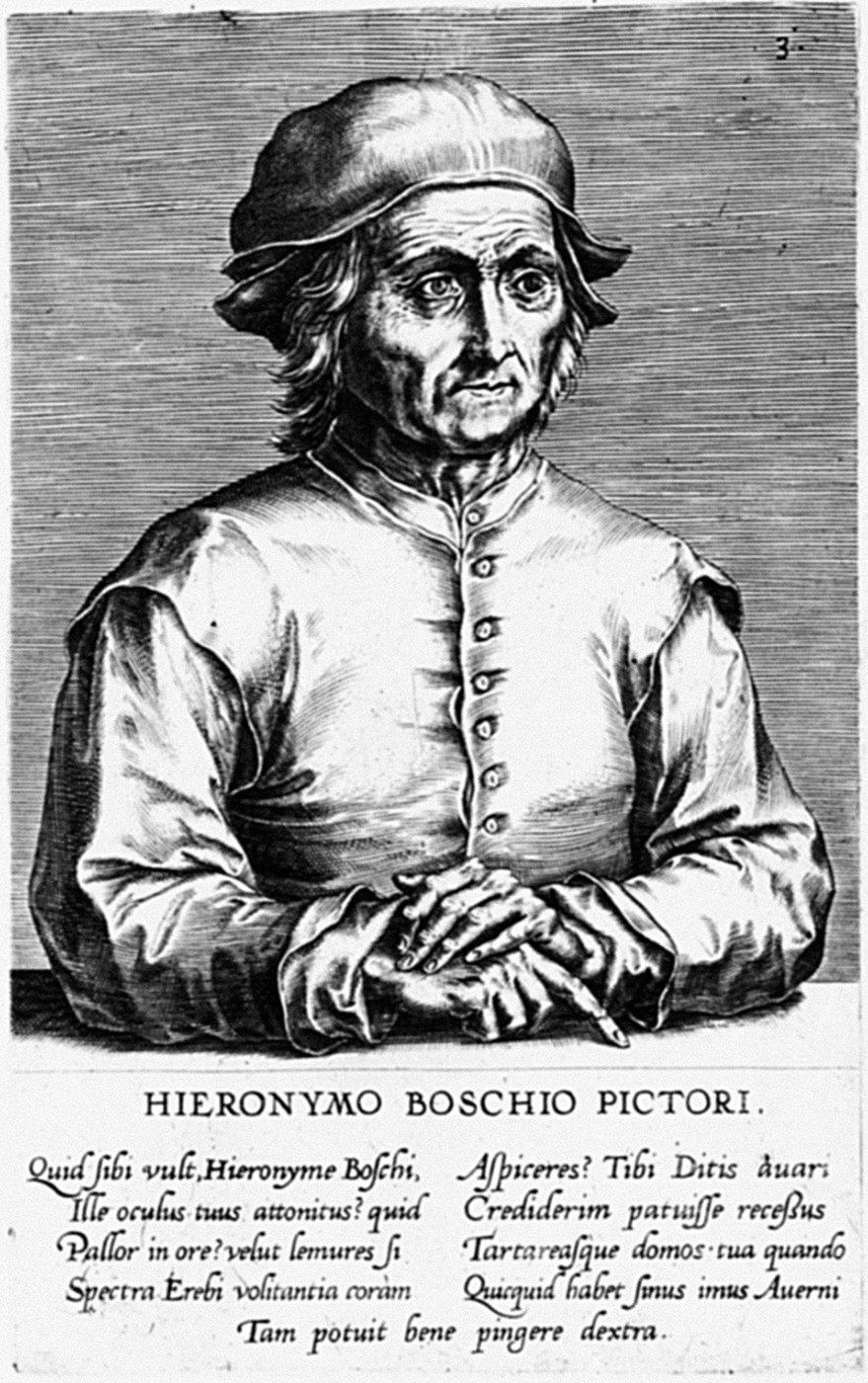
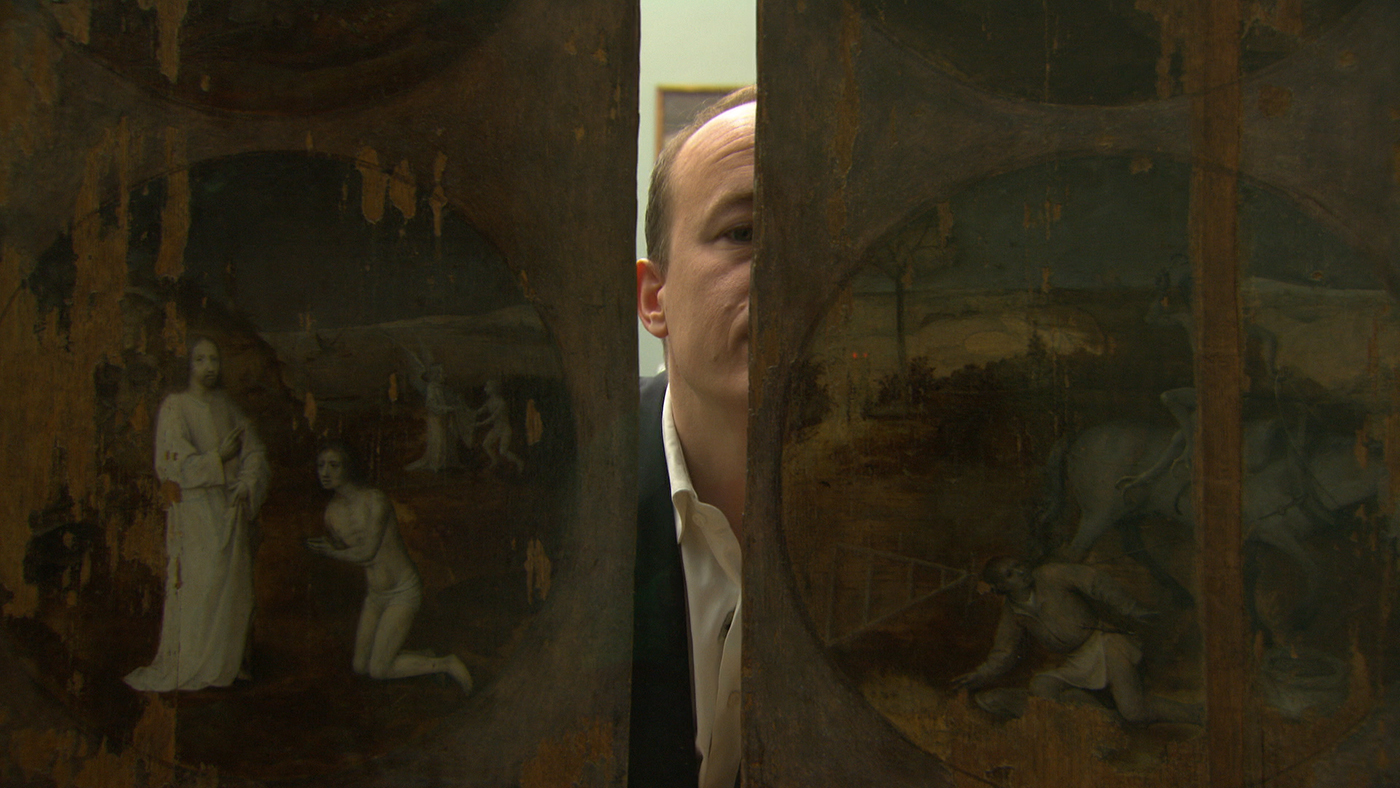
A New Film and Book Seek the True Hieronymus Bosch

Matthijs Ilsink, art historian with Hieronymus Bosch’s “Saint Christopher” (1490–1505) at the Rotterdam Museum Boijmans Van Beuningen (image courtesy Kino Lorber)
Roughly 30 minutes into Pieter van Huystee’s first feature-length film, Hieronymus Bosch: Touched by the Devil, Gabriele Finaldi, former deputy director of conservation and research at the Museo del Prado in Madrid, gives a sterling, succinct answer as to why El Bosco (as the Dutch artist is known in Spain) and his works are a source of continual fascination and study:
One of the reasons why Bosch is so successful and so admired is precisely because his work goes beyond that of a mere illustrator. Here is a fertile, inventive mind who is doing new things with traditional subjects and it’s that charge of originality, of invention. … [He’s] an artist who is extraordinarily brilliant and provides a new vision of things.

Cover of ‘Hieronymus Bosch: Visions and Nightmares’ by Nils Büttner (Reaktion Books, 2016) (image courtesy Reaktion Books) (click to enlarge)
Bosch and his unique vision have certainly endured. This year marks the quincentenary of his death (c.1450–1516), and widespread interest in the Old Master and his oeuvre shows no sign of waning. Currently playing at New York City’s Film Forum, Touched by the Devil (2015) goes behind the scenes of preparations for a celebratory, large-scale exhibition in the artist’s hometown of ’s-Hertogenbosch at the Noordbrabants Museum. (It was on view from February 13 through May 8, 2016.) The film investigates the process of authenticating Bosch’s artworks — a premise it shares with art historian Nils Büttner’s new book, Hieronymus Bosch: Visions and Nightmares (Reaktion Books, 2016). Büttner delves especially into what might have motivated the Dutchman to paint his signature imagery of puckish demons and the expanses between paradise and purgatory. Both the film and the book seek to find the true Bosch, the enigmatic figure whose portrayals of the afterlife, whether serene or infernal, serve as admonitions to mortals concerned for their souls. His transcendental visions of heaven and hell have saturated the consciousness of admirers for over 500 years.
The documentary begins with the Bosch Research and Conservation Project (BRCP), as its members travel to multiple sites across Europe and the United States in an attempt to properly attribute 25 works to the artist and bring them home, so to speak, for display; ’s-Hertogenbosch does not have a permanent collection of art by its native son.

Hieronymus Bosch, “The Garden of Delights” (circa 1494–1516) (detail), Museo Nacional del Prado, Madrid (image courtesy Kino Lorber)
The team of scholars, conservators, and scientists has adopted a “standardized approach” for its mission, using advancements in modern technology, conservation, and art history to scrutinize the paintings. They rigorously inspect the works to create typologies that form the basis of a comparative analysis: Do the brushstrokes that compose “The Garden of Earthly Delights” (c. 1503) match those observed in “The Last Judgment” (c. 1505)? How are owls, ears, or staffs standard or dissimilar across each of Bosch’s canvasses?
Through techniques such as infrared photography and reflectography, X-radiography and dendrochronology, members of the BRCP are able to carefully examine both the surface paintings and underdrawings, noting discrepancies between layers and often across different areas of one piece, leading some scholars to suspect the involvement of multiple hands in the creation of a single artwork.Touched by the Devil immerses its audience in these processes through close-up shots of the team as they photograph, polish, and slice the wood that frames the masterpieces under review. In the end, the team dismisses two works previously recognized as Bosches, while the Nelson-Atkins Museum of Art in Kansas City learns that “The Temptation of Saint Anthony” (1500–10) it holds is legitimate.

Ron Spronk, technical art historian, with Hieronymus Bosch’s “The Garden of Delights” (circa 1494–1516), Museo Nacional del Prado, Madrid (image courtesy Kino Lorber)
At times, we follow the team members, observing their discussions amongst each other in the archives and galleries they visit. We’re also privy to meetings among curators and phone calls between museums’ staff. But in a way it is van Huystee’s camera that is the most compelling character, as it assumes the role of auxiliary team member while simultaneously becoming a careful observer. The opening sequence immerses the viewer immediately, as the camera zooms in on the cracks and fissures in the surface of the paint. Some of the most thoughtful scenes are slow pans over particular elements of a canvas, allowing the viewer to get a sustained look at a mischievous demon or saint’s face. Given that Bosch’s works are often highly detailed cacophonies of figural shapes, the time to narrow in on select images and focus is appreciated.

Johannes Wierix (?), Hieronymus Bosch (1572), engraving (image courtesy Reaktion Books) (click to enlarge)
In Visions and Nightmares, Büttner gives particular weight to the techniques employed by the BRCP, as he aims to give a comprehensive overview of Bosch’s life and insight into the artist’s motivations for his paintings, based solely on those that have been definitively authenticated. Büttner looks to information that can be traced back to historical record, and is clear about this from the first chapter, stating that “although the large body of surviving material evidence, the pictures, records, and documents, do not determine what can or should be said about the historical context, they do determine what cannot be said. What follows can be said.”
Mythology surrounding Bosch has incorrectly labeled him a heretic or practitioner of witchcraft. In his introductory biography of the artist, Büttner mines previous research to dispel theories about Bosch’s life and work that portray interpretation as fact and look for evidence of impious behavior in the bizarre scenes of depravity he conjured. Büttner’s dense prose informs and educates in a manner typical of academic texts, though the illustrations and relatively short length keeps its verbosity from becoming intolerable, placing importance on Bosch’s relationship to religion and his membership within the Brotherhood of Our Lady, a confraternity comprised of clerics and the socially connected. His artworks emerged from an environment imbued with theology and his patrons’ commissions were variations on religious narratives. Known for visually representing the choice humans face when confronted with the temptation of sin, or what might await a soul in limbo, as in “The Garden of Earthly Delights,” “Adoration of the Magi” (c. 1485–1500), or “St. Jerome at Prayer” (c. 1495), Bosch actually incorporates more realism than the fantastical into his scenes.

Matthijs Ilsink, art historian, with Hieronymus Bosch’s “The Flood and Hell,” Museum Boijmans Van Beuningen, Rotterdam (image courtesy Kino Lorber)
Bosch’s innovative approach to his art spawned countless imitators and assumptions about what it all might mean, but both van Huystee’s film and Büttner’s book attach more importance to his life and work. The paintings are instructive, divulging what might happen to people consumed by sin and those who fight it. Bosch’s style set him apart from his contemporaries precisely because of the speculative nature of the work. Who knows for sure what happens to a soul in hell? One could only imagine what horrors would await. But Bosch made visual this “what if?” in such idiosyncratic ways that scholars continue to try to pinpoint, to confirm what makes Bosch really a Bosch, a question that continues to captivate viewers centuries after his death.
Hieronymus Bosch: Touched by the Devil by Pieter van Huystee is screening at Film Forum (209 W Houston St, West Village, Manhattan) through August 9. Hieronymus Bosch: Visions and Nightmares by Nils Büttner, out from Reaktion Books, is available on Amazon and other online booksellers.

.jpg?mode=max?w=780)
No comments:
Post a Comment